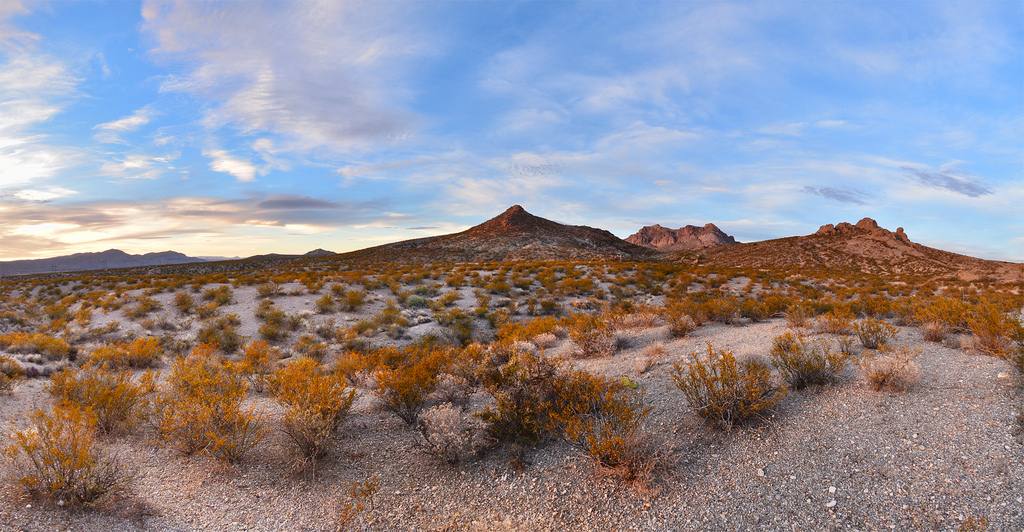What do you guys think about the idea of spending the weekend in the desert with me? Perchance we shall encounter a coyote, lizard and other fantastical beasts. We’ll need to bring a few bottles of water since deserts generally lack that stuff. Let’s also buy some sunscreen. We might also need to commandeer somebody’s camel if our legs get tired. Now that we sort of have plan, all that remains is choosing the desert. Here are 11 that we should consider.
1. Atacama Desert – South America
The Atacama Desert, located in Peru and Chili, lays west of the Andes. It’s known as the world’s driest place and with good reason: some of the parts have never received rain. But in spite of this, the desert is well inhabited. In fact, more than a million people live there. That’s a lot of desert dwellers, guys. The reason for this is because the Atacama is actually relatively cool as deserts go since it lays along the Pacific coast.

2. Tabernas Desert – Spain
If you would prefer to visit a desert without leaving mainland Europe, Tabernas is your only option. But it’s a pretty nice one. Located in southeastern Spain, through the years it served as a popular place to shoot spaghetti westerns since the terrain is similar to the southwestern United States. You’ll even come across Western-style towns as you travel through. If you’re a fan of the Algerian hedgehog (and why wouldn’t you be?) you might spot one here.

3. Chihuahuan Desert – New Mexico
Among the largest deserts in North America covering 175,000 square miles (282,000 km²), you will find a lot of amazing plants and animals here, including the Arizona rainbow cactus and the gray fox. But the most popular attraction is the White Sands National Monument in New Mexico, with features incredible landscapes of white gypsum sand dunes.

4. Sahara Desert – Africa
Spread out over most of northern Africa, the Sahara Desert is the largest hot desert (3.6 million square miles or 9.3 million km²) in the world and third largest overall. When most people think about the Sahara, they imagine that it’s nothing but amazing sand dunes. But these actually only make a small portion of the desert. Most of the desert consists of rocky hamada or barren land with rocky plateaus. The Sahara also contains mountains, occasional grasslands, and salt flats.

5. Gobi Desert – China/Mongolia
The Gobi Desert is located in southern Mongolia and northwestern China. It was notable for being part of the Silk Road as well as for its role in the Mongol Empire. It’s also famous for its schizophrenic climate. For instance, summer temperatures typically hover around 115°F (45°C) while in the winters it’s not uncommon for the unforgiving winds to bring temperatures to as low as -40°F (-40°C). Dinosaur fossils galore and you’ll also encounter Bactrian camels and Siberian ibex, and Gobi brown bears.

6. Thar Desert – India/Pakistan
The Thar Desert is the most populated desert in the world with more than 16,000,000 inhabitants, primarily Hindus, Muslims and Sikhs. Most of the desert consists of sand dunes, with alluvial plains and salt lakes forming during monsoon season. It’s also a very biodiverse place, claiming more than 140 different species of birds, 25 types of snakes, and 23 types of lizards.

7. Salar de Uyuni – Bolivia
Located in southwest Bolivia, Salar de Uyuni was once a pre-historic lake called Lago Minchín. It dried up and left us with the largest salt flats in the world, covering more than 4,000 square miles (10,500 km²). It also contains between 50% and 70% of the world’s lithium reserves. The best way to experience the beauty of Salar de Uyuni is by taking a guided tour with an off-road vehicle.

8. White Desert – Egypt
The White Desert National Park in Farafra, Egypt is a natural wonder to behold. It consists of sand of various shades of white and chalk rock formations – many of which resemble giant mushroom clouds – carved out by the wind. You can also find more than 100 wells – many of them natural – and dating back to the ancient Roman times.

9. Taklamakan Desert – China
Located in the southwest Xinjiang Uyghur Autonomous Region of northwest China, the Taklamakan is the world’s second-largest shifting-sand desert. The summer temperatures don’t get very hot by desert standards, only reaching around 100°F (39°C). However, the climate is extremely brutal in the winter, and there is almost no water to speak of, which meant travelers along the Silk Road generally tried to avoid it.

10. Namib Desert – Africa
The Namib is the oldest desert on the planet, having formed between 55 and 80 million years ago. It is spread out through Namibia, Angola and South Africa along the Atlantic coast. You can find a lot of plants and animals here, including brown fur seals, mountain zebras, the famous African Bush elephants that can go days without drinking water. In addition, the Skeleton Coast contains more than a 1,000 shipwrecks.

11. Mojave Desert – Nevada/California
The Mojave spreads out primarily over parts of southeastern California and southern Nevada with little sections of Arizona and Utah as well. It is famous for Death Valley, the hottest and driest place on Earth. You’ll also find the Valley of Fire State Park in all its colorful glory.

